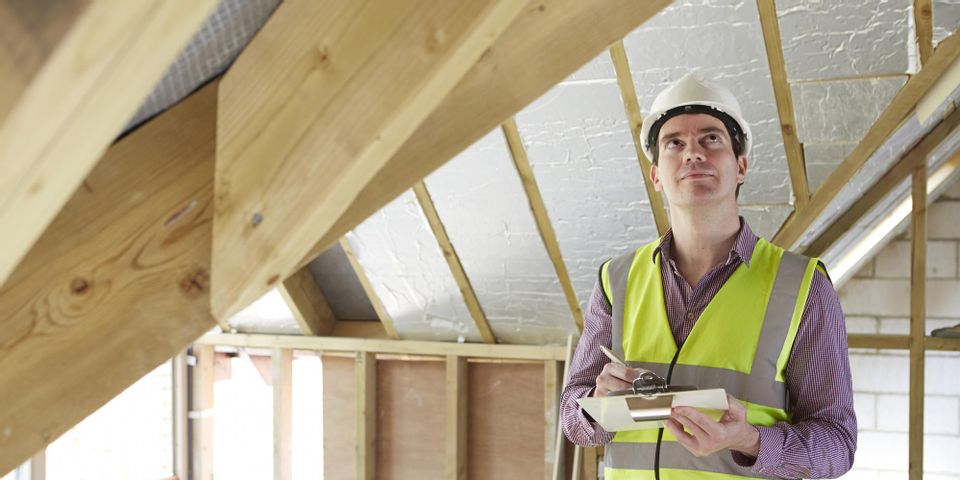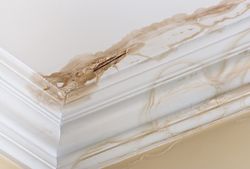
Dry rot is a form of fungus that is far more dangerous than wet rot. Wet rot typically only affects areas of wood that have gotten wet. Dry rot, on the other hand, can spread rapidly and overtake your roof, compromising the structure of your home. Check your roofing for these signs of dry rot and contact professional roofers immediately if you find them.
How to Spot Dry Rot
1. Sagging Roof
If any part of your roofing is sagging, it could be due to dry rot. Look at your roof from a distance. Is the ridge, or the seam at the top of your roof, a straight line? If it’s bowing at all, the beams holding it up may be rotting.
Similarly, look at the flat planes of your roof. If any of them are sagging in, that could also be caused by dry rot.
2. Stains on Walls or Ceilings
 Do you have wet spots or dark streaks on your walls or ceilings? If the roof is rotting, it will likely also be leaking. When water leaks in, it gets into the walls and damages the boards and framing beams of your home. If you spot water marks on the wall, call a roofer to ensure your home’s structural stability is maintained.
Do you have wet spots or dark streaks on your walls or ceilings? If the roof is rotting, it will likely also be leaking. When water leaks in, it gets into the walls and damages the boards and framing beams of your home. If you spot water marks on the wall, call a roofer to ensure your home’s structural stability is maintained.
3. Discolored Fascias
Fascias are the boards beneath your gutters. Despite being exposed to the elements, these roof components don’t usually face a constant flow of water. If your fascias are discolored or stained, your gutters may be leaking or clogged, or the metal flashing could be failing. The presence of water where it isn’t supposed to be is a large factor in the spread of dry rot, so have this issue addressed immediately.
For help assessing possible rot in your roof, contact Springer Roofing in Kearney, NE. Whether you have metal roofing, a flat roof, single-ply roofing, or shingles, this team will handle any issue with high-quality materials and excellent customer service. Call these roofing contractors at (308) 237-4498 for a free assessment, or visit them online for more information.
About the Business
Have a question? Ask the experts!
Send your question

